Antarctica, the last great frontier. So very cold and remote and difficult to access, yet filled with some stark beauty. If only there were an easier way to see it.....

in 1977, Air New Zealand came up with that easier way. They would send down one of their new DC-10 aircraft on a sightseeing trip near the US station at McMurdo. Passengers would be able to see the beauty of the polar region from their seats while drinking champagne and listening to distinguished polar explorers point out landmarks over the PA system. For NZ$359, passengers would depart Auckland at 8AM, see Antarctica by air, and return to Auckland by 9PM, after a refueling stop in Christchurch.
Air New Zealand advertising brochure:
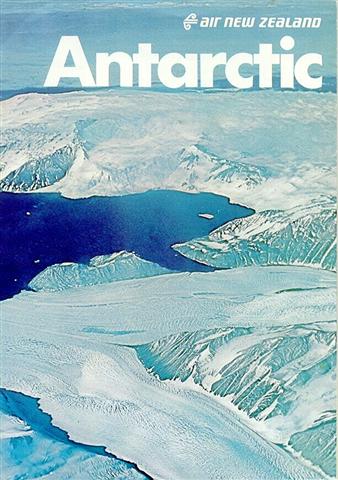
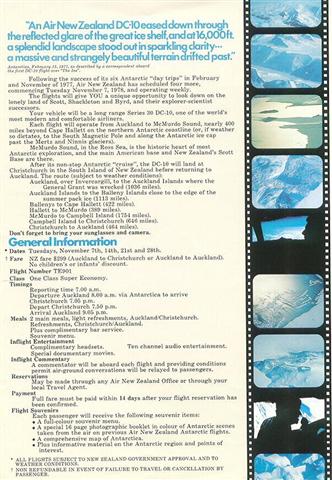
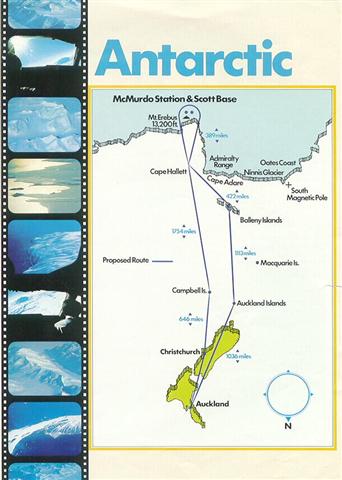
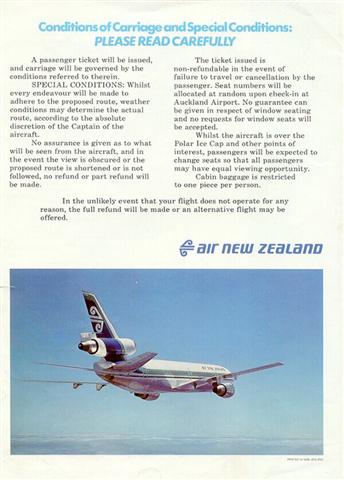
On 28 November, 1979, the fourth sightseeing flight of the year took off from Auckland. Previous flights had flown over the waters of McMurdo Sound, yet for this mission, the coordinates for the waypoints had been changed. The pilot and copilot, although experienced flyers, had not flown one of the Antarctic missions before. They had been briefed on the original routing, and not on the changes, which took them over higher terrain.
The route in orange, on the left was what previous missions had flown, and that the pilots through they were flying. The route in red, on the right, is what they actually flew. The figure 8 loops were used to descend from altitude to low level.

The crew reached Antarctica. The weather was spotty, but they broke out into VMC conditions and descended to 1500 feet. This altitude would have been all right over McMurdo Sound, but not over the approaches to Lewis Bay and Ross Island, where they actually were. Additionally, although the plane was in the clear, the high terrain ahead was hidden by a then little-known visual illusion called Sector Whiteout.
http://www.erebus.co.nz/Investigation/CaptainVettesResearch/CaptainVettesResearchPage2.aspx
Examples of sector whiteout, taken from a helicopter mission to Mt Erebus in 1980. Note how the view changes from the first to fifth photo.
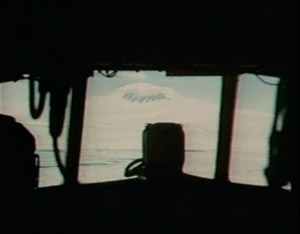
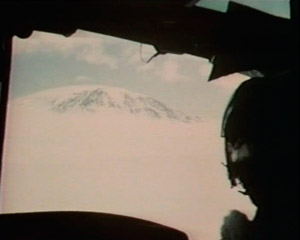
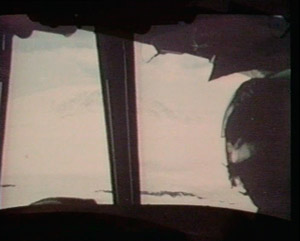
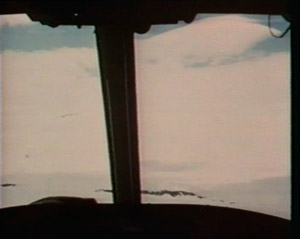
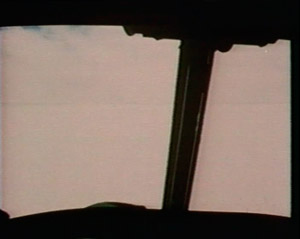
The plane flew into the side of 12,448' Mt. Erebus, killing 237 passengers and 20 crew. Search and rescue planes located the wreckage the next day.

Recovery of the bodies went on for some time, in appallingly gruesome conditions.
"The fact that we all spent about a week camped in polar tents amid the wreckage and dead bodies, maintaining a 24-hour work schedule says it all. We split the men into two shifts (12 hours on and 12 off), and recovered with great effort all the human remains at the site. Many bodies were trapped under tons of fuselage and wings and much physical effort was required to dig them out and extract them.
Initially, there was very little water at the site and we had only one bowl between all of us to wash our hands in before eating. The water was black. In the first days on site we did not wash plates and utensils after eating but handed them on to the next shift because we were unable to wash them. I could not eat my first meal on site because it was a meat stew. Our polar clothing became covered in black human grease (a result of burns on the bodies).
We felt relieved when the first resupply of woollen gloves arrived because ours had become saturated in human grease, however, we needed the finger movement that wool gloves afforded, i.e., writing down the details of what we saw and assigning body and grid numbers to all body parts and labelling them. All bodies and body parts were photographed in situ by U.S. Navy photographers who worked with us. Also, U.S. Navy personnel helped us to lift and pack bodies into body bags which was very exhausting work.
Later, the Skua gulls were eating the bodies in front of us, causing us much mental anguish as well as destroying the chances of identifying the corpses. We tried to shoo them away but to no avail, we then threw flares, also to no avail. Because of this we had to pick up all the bodies/parts that had been bagged and create 11 large piles of human remains around the crash site in order to bury them under snow to keep the birds off. To do this we had to scoop up the top layer of snow over the crash site and bury them, only later to uncover them when the weather cleared and the helos were able to get back on the site. It was immensely exhausting work."
http://en.wikipedia.org/wiki/Air_New_Zealand_Flight_901
One official report placed blame solely on the pilots. Another placed blame on Air New Zealand, famously calling the testimony of corporate officials "an orchestrated litany of lies". No more tourist flights occurred.

FURTHER READINGS:
New Zealand history website
New Zealand Airline Pilots website
New Zealand government archives website
South Pole Station website
CVR transcript of Air NZ 901
 Win a FREE Membership!
Win a FREE Membership!